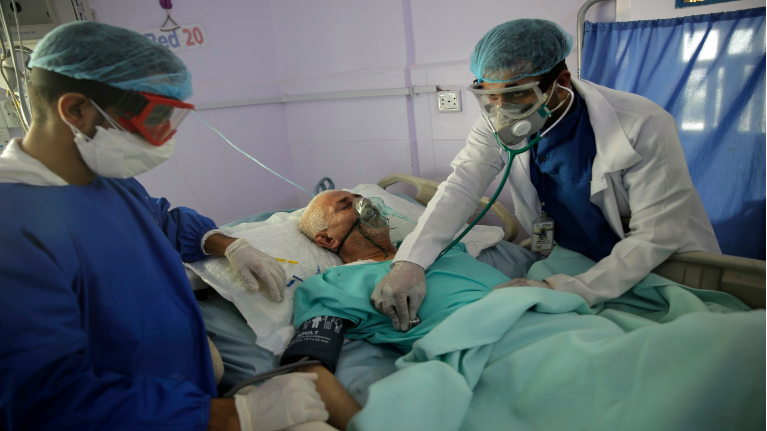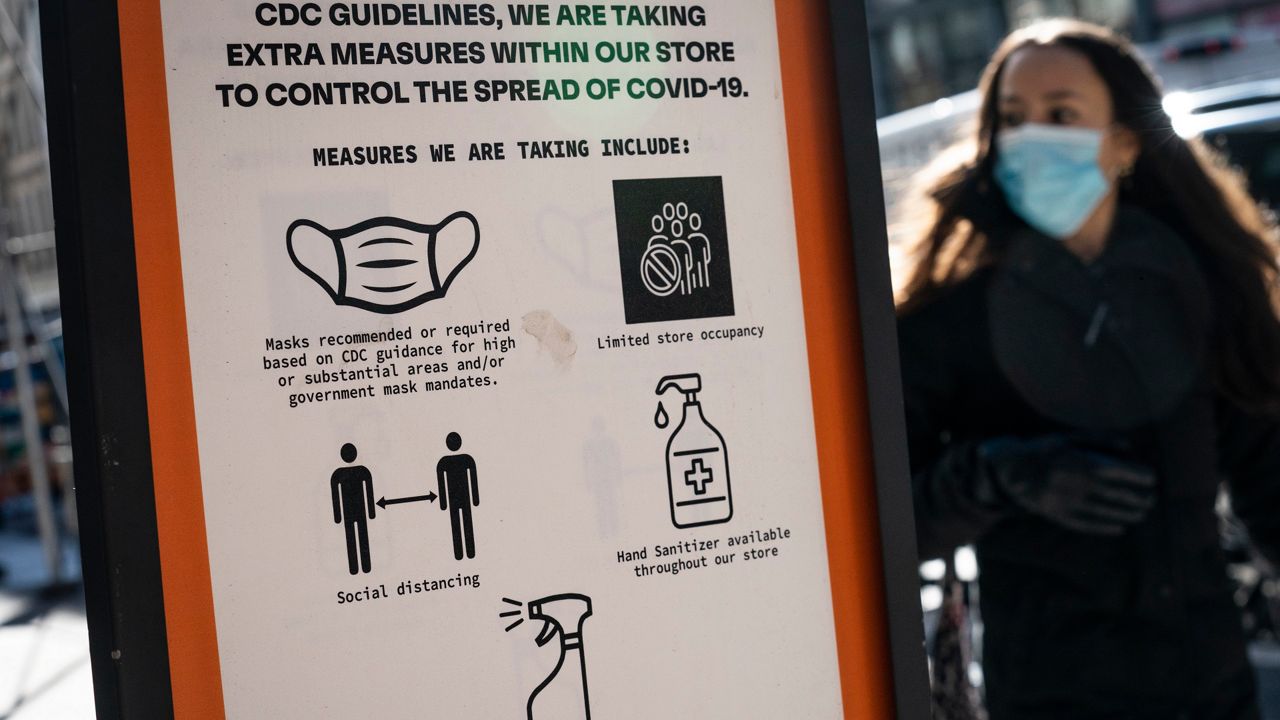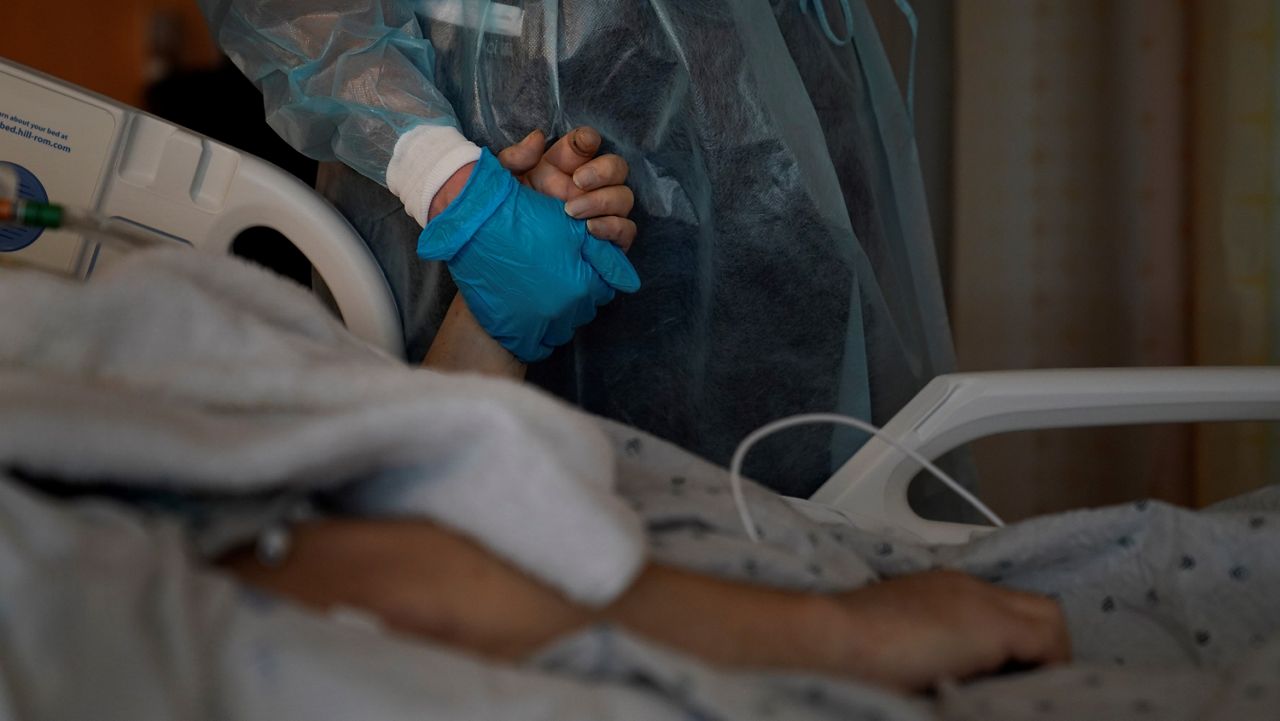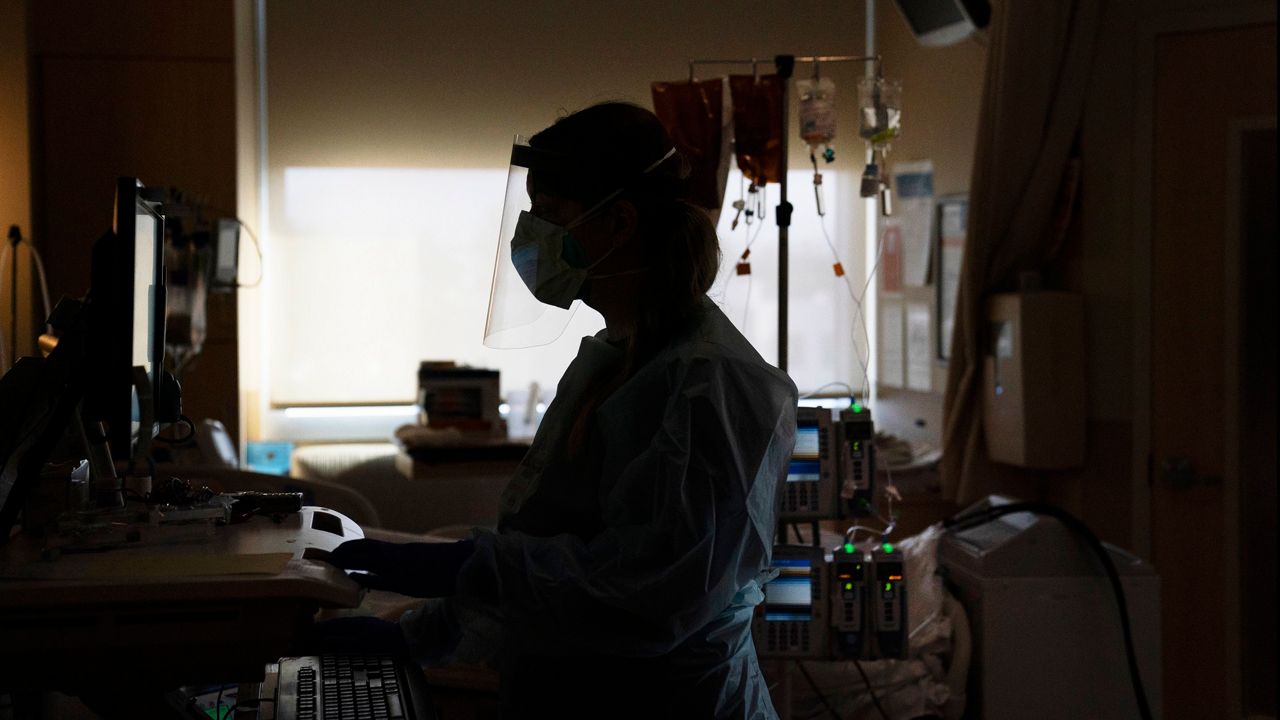MILWAUKEE (SPECTRUM NEWS) — With 669 patients in the hospital and cases continuing to shoot up, Wisconsin’s COVID-19 outlook is reaching alarming new levels.
“This is what we’re facing here in Wisconsin: COVID-19 is a highly infectious disease, and it is spreading in our state. It is stretching our hospital capacity. And it is overwhelming our public health infrastructure,” Department of Health Services Secretary-designee Andrea Palm said at a Thursday briefing. “We must take action.”
On Wednesday, Wisconsin saw a record 683 hospitalizations, the eighth out of nine consecutive days that it had broken its own record. Though the count dipped slightly on Thursday, the number of COVID-19 patients in the hospital has still almost doubled in the past two weeks.
The state has been breaking other records as well: On Thursday, it added its highest number of cases in a single day, with 2,887 new cases reported. On Wednesday, it reported its highest number of deaths in one day, with 27 Wisconsinites who died of COVID-19. And positivity rates have remained high, with a seven-day average over 17%.
Hospitals all across the state are feeling this spike. As of Thursday, all of Wisconsin’s seven Healthcare Emergency Readiness Coalition regions had growing COVID-19 hospitalization rates, and most also had growing numbers of ICU patients, according to the DHS.
The Southeast region — which includes Milwaukee and its surrounding counties — was the closest to reaching its capacity, with 88% of licensed beds occupied. The Fox Valley region, which has recently become a hotspot for cases in the state, was close behind, with 87% of hospital beds in use.
The Northwest region had the most beds still available, with 75% occupancy, but in the past two weeks also had the fastest-growing trajectory of all the regions proportionally. The area only had 10 coronavirus patients as of Sept. 16, which had tripled to 30 by Sept. 29.
At Tuesday’s briefing, Ryan Westergaard, chief medical officer for the DHS Bureau of Communicable Diseases, said that the state had moved into a “generalized epidemic” — meaning contact tracers could no longer trace cases to specific outbreaks or exposure points. The growing hospitalization numbers are also a sign that the virus is affecting people in all age groups, he pointed out, not just the young adults who had driven the state’s case rates up over the summer.
“It’s safe to assume that the virus is everywhere,” Westergaard said. “So everyone needs to change their behavior.”
Westergaard and Palm said that in their conversations with hospital systems across the state, they were seeing increasing concern over these fast-growing numbers.
Mark Kaufman, chief medical officer for the Wisconsin Hospital Association, said this week that he’s expecting the situation to get worse, according to WPR. He’s anticipating “a rocky two or three months” as hospitals are already approaching peak capacity, pushed to closely manage their admissions, WPR reports.
Imran Andrabi, president and CEO of ThedaCare, said at Thursday’s DHS briefing that 95% of the hospital system’s beds were full. In the past month, he said their COVID-19 patients had increased from 13 to 64. As the numbers continue to grow, Andrabi said he was worried about the hospitals' ability to keep caring for non-coronavirus patients as well, like those who come in with heart attacks, strokes, mammograms, or other needs that should be addressed quickly.
In Green Bay — which has one of the fastest-growing outbreaks in the U.S., according to a New York Times analysis — all four hospitals are nearing capacity, one doctor shared in a warning on Facebook this week. Paul Casey, medical director of the emergency department at Bellin Hospital, said the hospital has already had to cancel cardiac surgeries and place patients in the hallway due to a lack of space.
The Milwaukee Journal-Sentinel, a partner of Spectrum News 1, reports that other hospitals have had to waitlist patients, expand COVID-19 care beyond their specially designed coronavirus units, and transfer incoming patients to neighboring hospitals to manage capacity.
State officials said that having plans to transfer patients between partner hospitals was an expected practice, and they hadn’t heard of patients being turned away from care altogether.
“Sometimes there is a mismatch for where a lot of disease activity is and where hospital capacity is,” Westergaard said. “Even before the pandemic, a common practice is to try to find the right level of care, given that some hospitals might have insufficient capacity.”
As another layer of protection, Wisconsin set up an alternate care facility at State Fair Park back in April as a potential space to take in overflow patients. The Army Corps of Engineers constructed 530 patient spaces, and could expand to accommodate more than 750 people.
Palm said the facility was built as the “ultimate insurance policy” for a worst-case scenario of overburdened hospitals. Though the site hasn’t taken in any patients yet, she said the state is closer than ever to needing that extra space.
Palm said with four to seven days warning from hospitals, they’d be able to have the facility ready to go and surge patients there for care.
“We are prepared to stand it up and staff it and have it operational to be the backstop should our hospitals exceed their capacity,” Palm said. “But again, our goal should be never to get there.”
In addition to bed capacity, hospitals have also been dealing with staffing strains as workers have been infected with COVID-19 or required to quarantine. Andrabi said at the briefing that 250 of ThedaCare’s staffers were absent on Thursday.
The DHS reports nearly 8,300 cases among healthcare workers since the start of the pandemic.
“If our people, if our team members are going to get infected, they’re not going to be able to do the work that they need to do to serve the people in our community,” Andrabi said. “Sometimes it’s not just the number of beds that are available — it’s also the people that actually serve the people in that bed.”
To help address strains on staffers, Evers and Palm issued an emergency order Thursday adding flexibility for healthcare licensing requirements, including by allowing providers licensed in other states to practice in Wisconsin. In the order, they describe “critical staffing shortages” across the state: More than half of Wisconsin counties already faced a shortage of physicians before the pandemic, they write, and those strains have only increased.
But leaders on Thursday stressed that the best way to keep hospitals from overflowing isn’t by adding more beds or workers — it’s by containing the spread of COVID-19. Andrabi and state officials pleaded with Wisconsinites to commit to measures like staying home, wearing masks, getting flu shots, and social distancing in order to help the struggling healthcare system.
“At the end of the day, whether we're tired or not, the longer it takes for everyone to take COVID-19 seriously, the longer this virus will linger,” Evers said. “Right now, we can't live like we're back to the way things used to be.”









